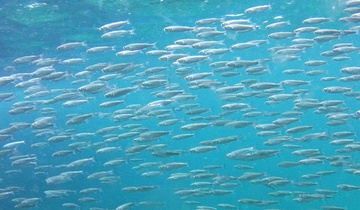From about the 1840s, willows (Salix spp.) were introduced to New Zealand by early settlers.
Pioneer farmers started planting willows to stabilise river banks which had been stripped of native vegetation, a river control practice continued by many regional councils. Introduced willow species (Salix spp.) are now a dominant component of the vegetation in areas developed for pastoral agriculture.
Over the last decade, concern has grown about the willows' invasive natural spread along many New Zealand waterways, including wetlands. While they are seen as important for bank stabilisation and shade, densely-willowed areas can reduce water transport capacity, productivity, natural biodiversity and access for recreation. Due to their ability to grow from displaced twigs and branches, willows often grow where they aren't wanted. Consequently, water resource managers are often faced with the dilemma of having to make a decision about whether to remove or to retain willows along streams, and willow removal and poisoning programmes are now in place in some areas.
Willows on the margins of streams and rivers are known to provide habitat that is often used by both longfin and shortfin eels. This is important in both an ecological and a commercial sense, as the removal of riparian willows - without replacement with a suitable alternative - from streams and rivers could adversely affect both the amount of habitat available to eels, and the number of large eels available to fishers.
To date, few studies have explicitly examined the importance of willows for fish in our waterways. A preliminary NIWA scoping study investigating the weights of eels in willowed and non-willowed reaches of three waterways (Shag River, Tiritea Stream, and Wakapuaka River) found that:
- Longfins > 220 g were much more abundant in willowed compared to non-willowed reaches.
- Longfins < 220 g were of roughly similar abundance and density in willowed and non-willowed reaches.
- No shortfins > 220 g were caught in non-willowed reaches, and only moderate numbers were found in willowed stretches.
- Shortfins caught in the three study streams were predominantly < 220 g, and these were five times more abundant in the willowed reaches.
The main reason that riparian willows appear to provide such significant habitat for eels is that, being a nocturnal species, eels utilise willows during the day to avoid light. Eels are generally known as secretive and "cover-loving", and large eels in particular are frequently associated with overhung banks and dense instream cover such as logs and debris.
For juveniles, features of the substrate are very important, but larger eels require more complex cover like debris clusters and undercut banks and the availability of such cover will largely determine the density of large eels. In most braided rivers, almost all such cover for large eels is provided by willows.
References and further reading
Cairns, D. (1941) Life-history of the two species of New Zealand freshwater eel. Part I. Taxonomy, age, growth, migration, and distribution. New Zealand Journal of Science 23: 53-72.
Glova, G.J., Duncan, M.J. (1985). Potential effects of reduced flows on fish habitats in a large braided river, New Zealand. Transactions of the American Fisheries Society 114: 165-181.
Glova, G.J., Sagar, P.M. (1994). Comparison of fish and macroinvertebrate standing stocks in relation to riparian willows (Salix spp.) in three New Zealand streams. New Zealand Journal of Marine and Freshwater Research 28: 255-266. http://www.tandfonline.com/doi/abs/10.1080/00288330.1994.9516613
Glova, G.J., Jellyman, D.J., Bonnett, M.L. (1998). Factors associated with the distribution and habitat of eels (Anguilla spp.) in three New Zealand lowland streams. New Zealand Journal of Marine and Freshwater Research 32: 255-269. http://www.tandfonline.com/doi/abs/10.1080/00288330.1998.9516824
Hayes, J.W., Leathwick, J.R., Hanchet, S.M. (1989). Fish distribution patterns and their association with environmental factors in the Mokau River catchment, New Zealand. New Zealand Journal of Marine and Freshwater Research 23: 171-180. http://www.tandfonline.com/doi/abs/10.1080/00288330.1989.9516353
Jellyman, D. (2012). Survey of tuna in customary areas of ANG 14. New Zealand Fisheries Assessment Report 2012. Ministry of Primary Industries, Wellington.
Jellyman, D., Glova, G. (1998). Eels and cover. Water & Atmosphere 6(2): 12-13.
Jellyman, D.J., Bonnett, M.L., Sykes, J.R.E., Johnstone, P. (2003). Contrasting use of daytime habitat by two species of freshwater eel Anguilla spp. in New Zealand rivers. pp. 63-78. In: Dixon D. (Ed.). Biology, Management, and Protection of Catadromous Eels. American Fisheries Society Symposium 33: 191-205.
Jowett, I.G., Richardson, J. (1995). Habitat preferences of common, riverine New Zealand native fishes and implications for flow management. New Zealand Journal of Marine and Freshwater Research 29: 13-23. http://www.tandfonline.com/doi/abs/10.1080/00288330.1995.9516635
Marden, M., Rowan, D., Phillips, C.J. (2005). Stabilising characteristics of New Zealand indigenous riparian colonising plants. Plant Soil 278: 95-105. http://icm.landcareresearch.co.nz/knowledgebase/publications/documents/Mardenetal2005_Plant_and_Soil.pdf
National Poplar and Willow Users Group. (2007). Growing Poplar and Willow Trees on Farms. Guidelines for Establishing and Managing Poplar and Willow Trees on Farms. Compiled as part of MAFs Sustainable Farming Fund Poplar & Willow Project (Grant No. 04/089). 74 p. http://www.fao.org/forestry/21644-03ae5c141473930a1cf4b566f59b3255f.pdf
Phillips, C., Daly, C. (2008). Willows or natives for stream bank control: a survey of usage in New Zealand regional councils. Motueka Integrated Catchment Management (Motueka ICM) Programme Report Series. Landcare Research, Lincoln. 25 p. http://icm.landcareresearch.co.nz/knowledgebase/publications/public/Willows_survey_report_2008.pdf








